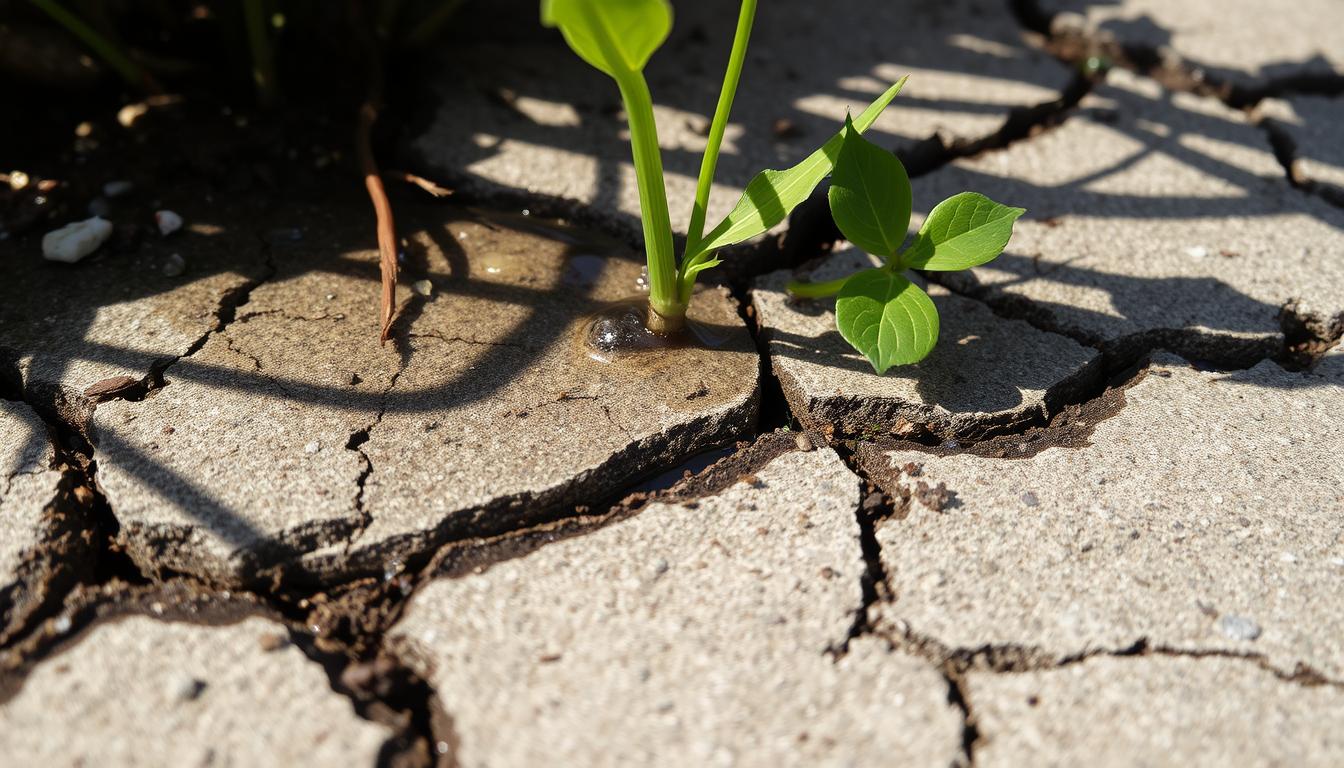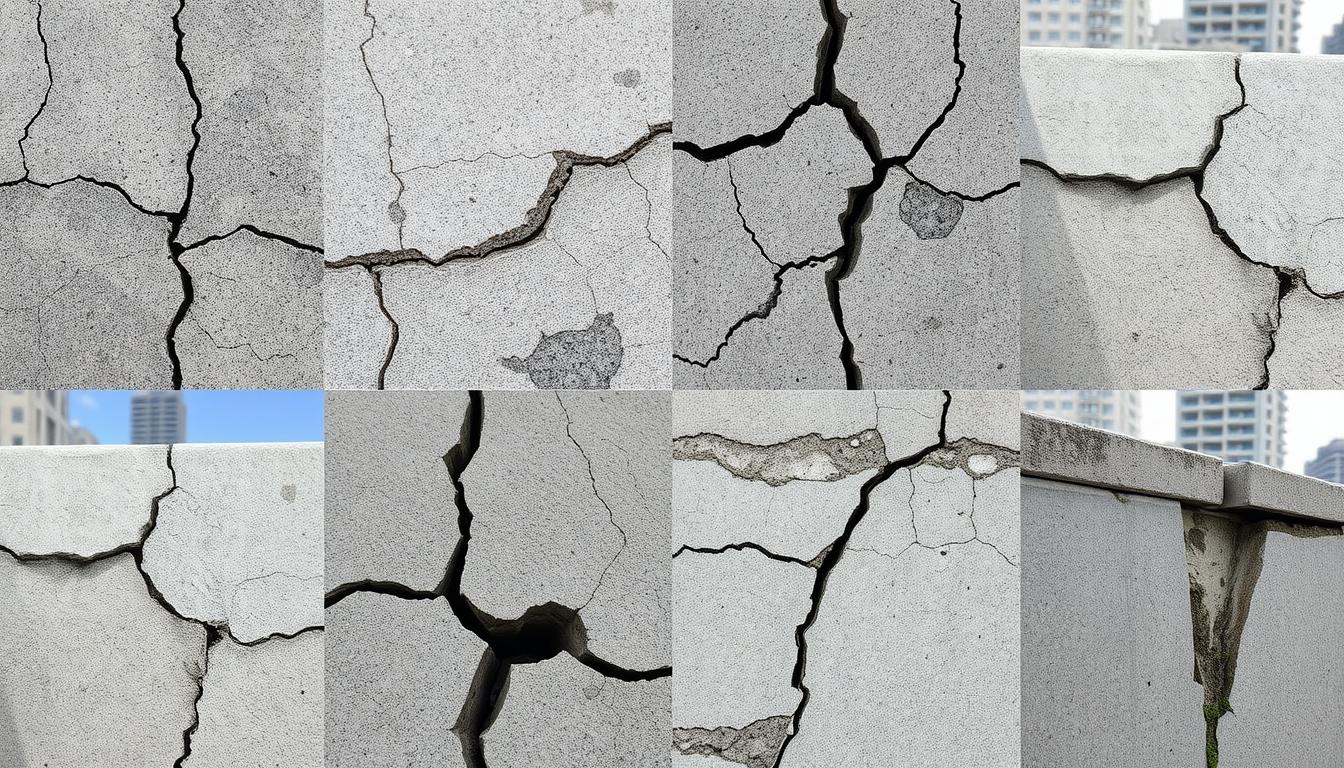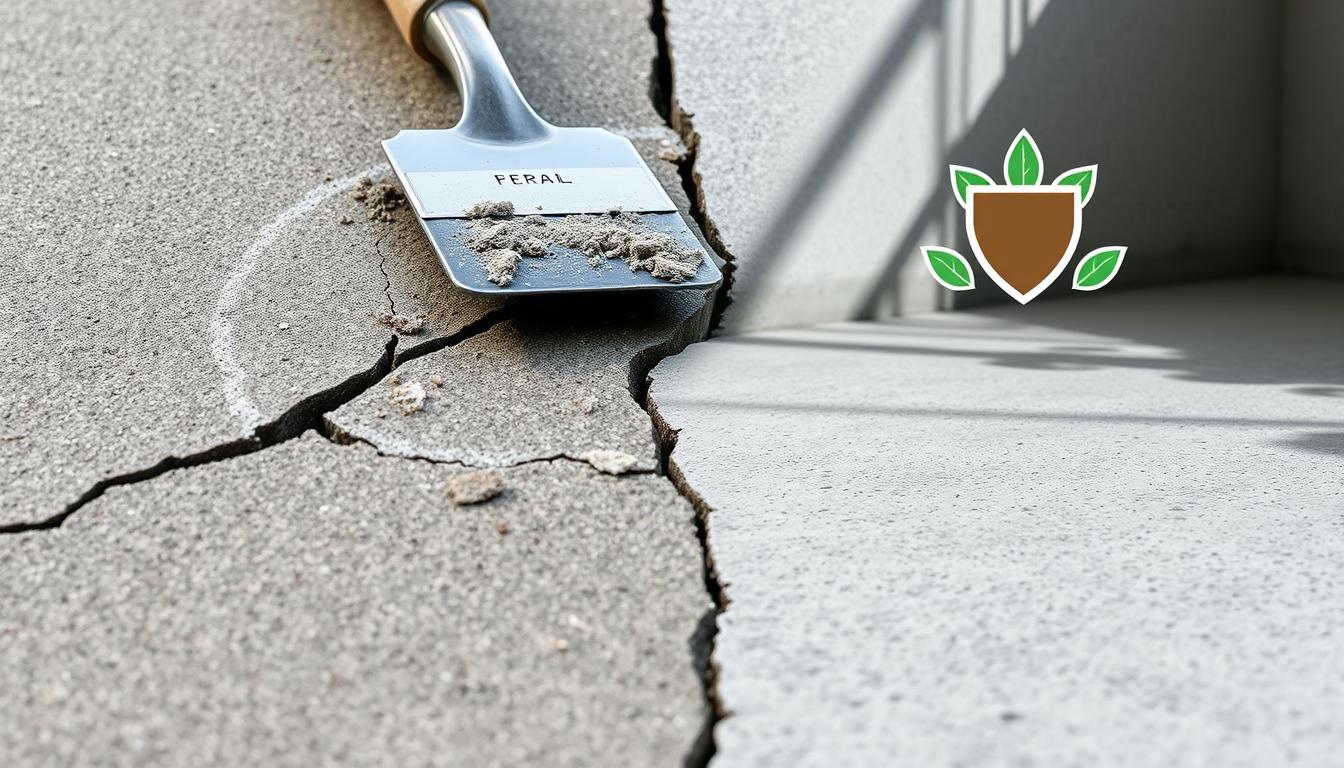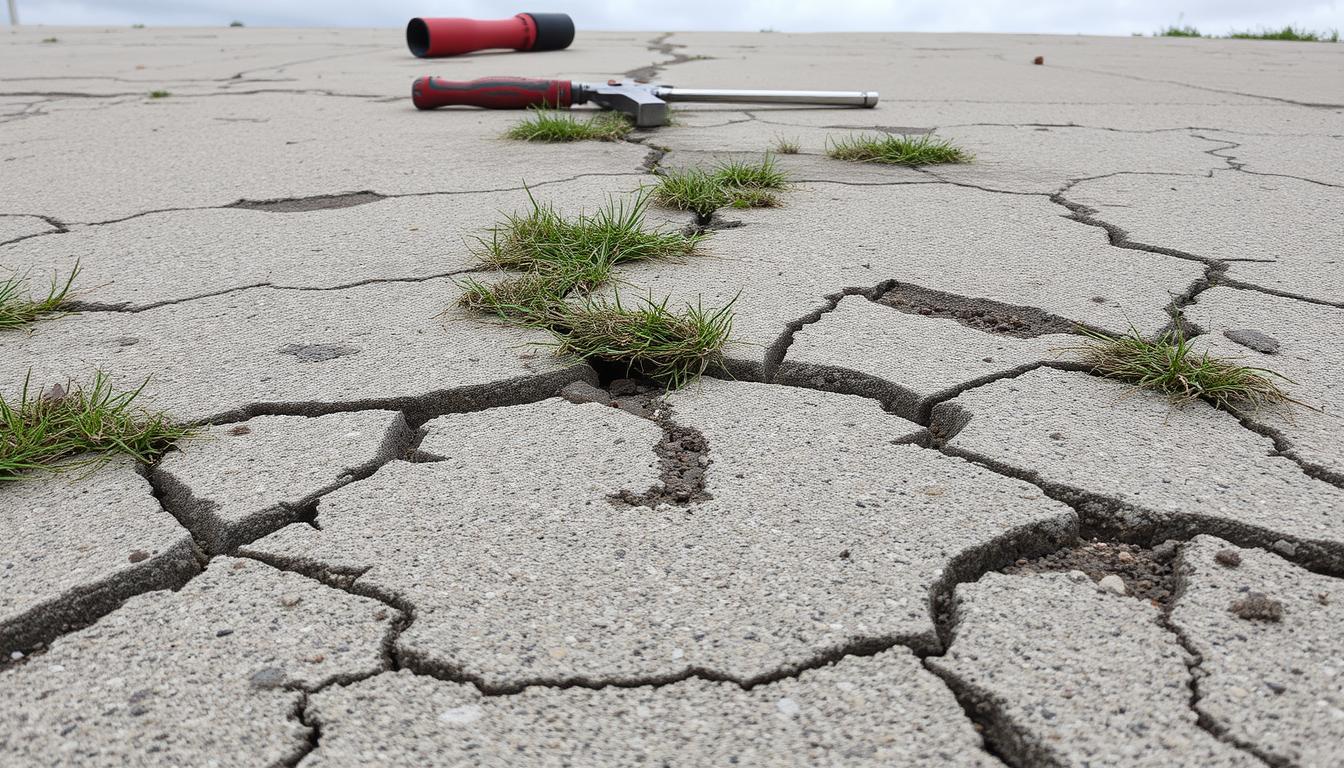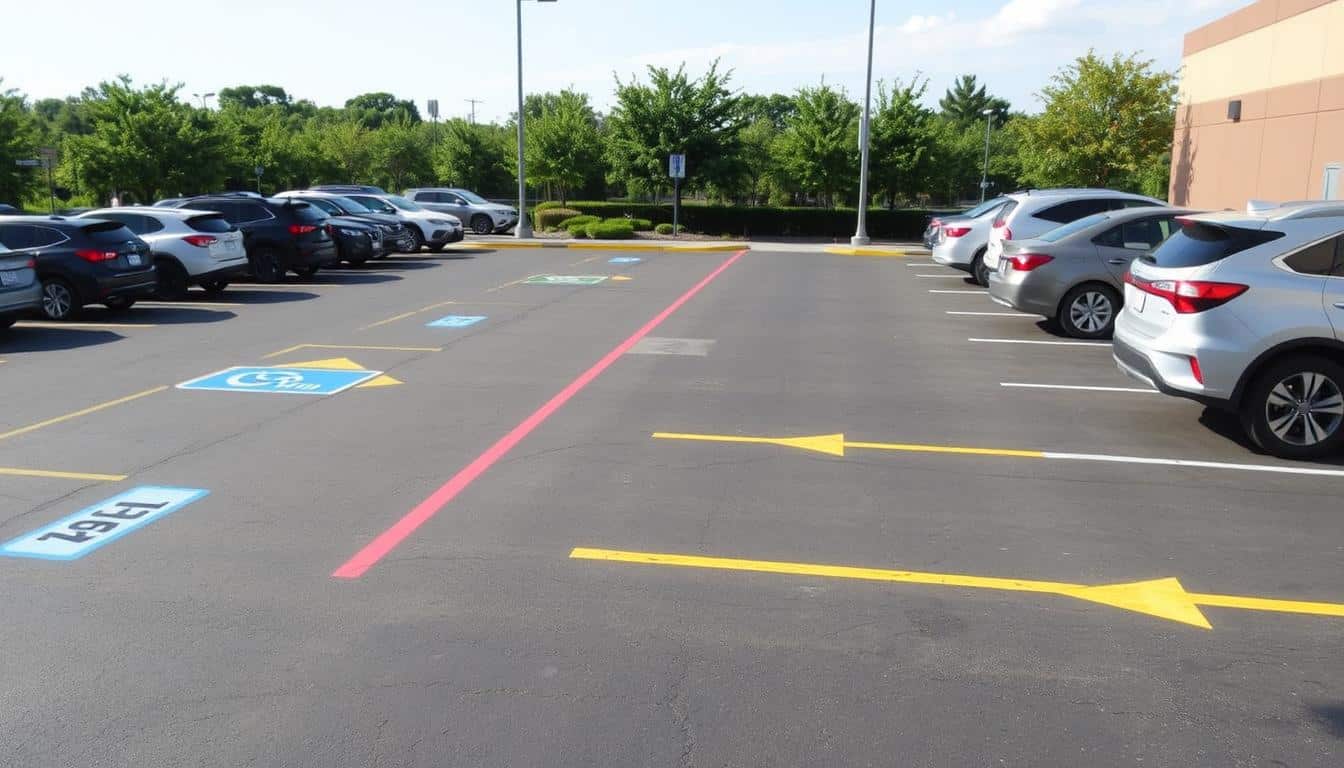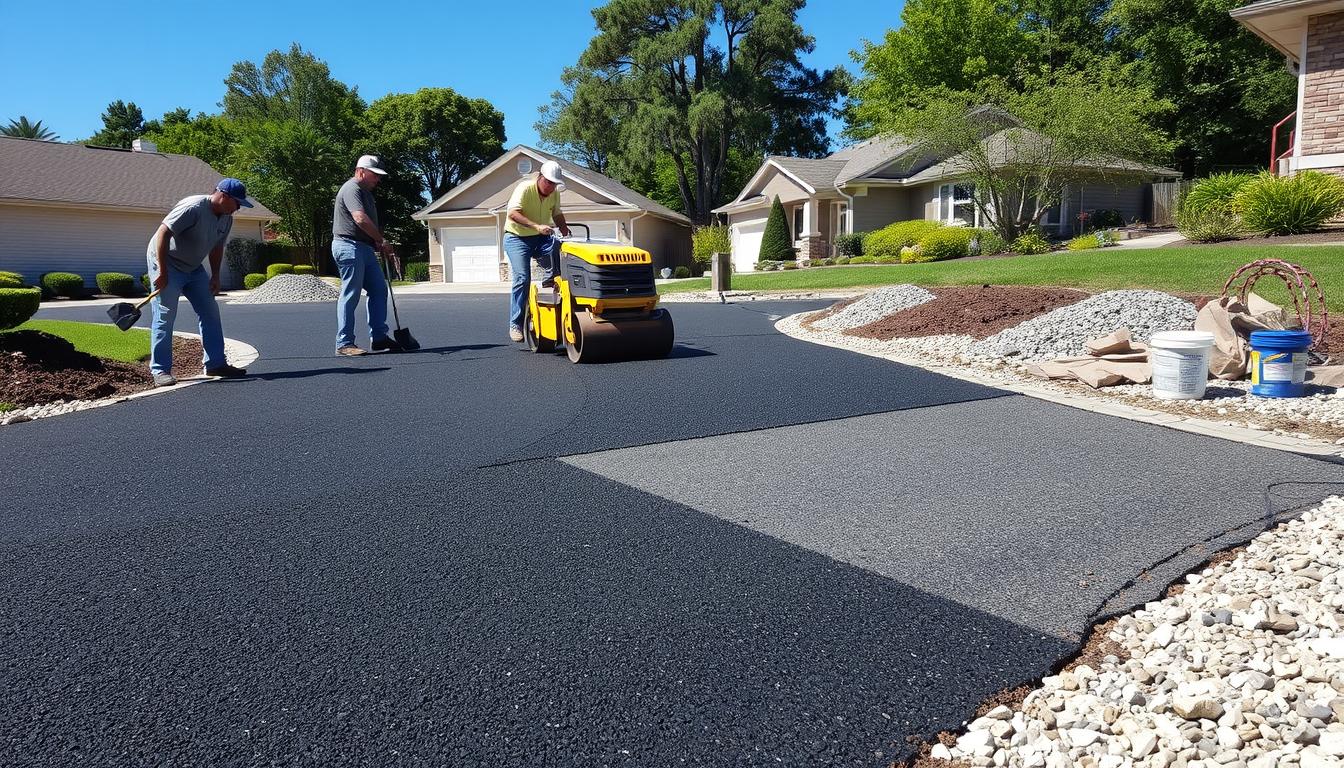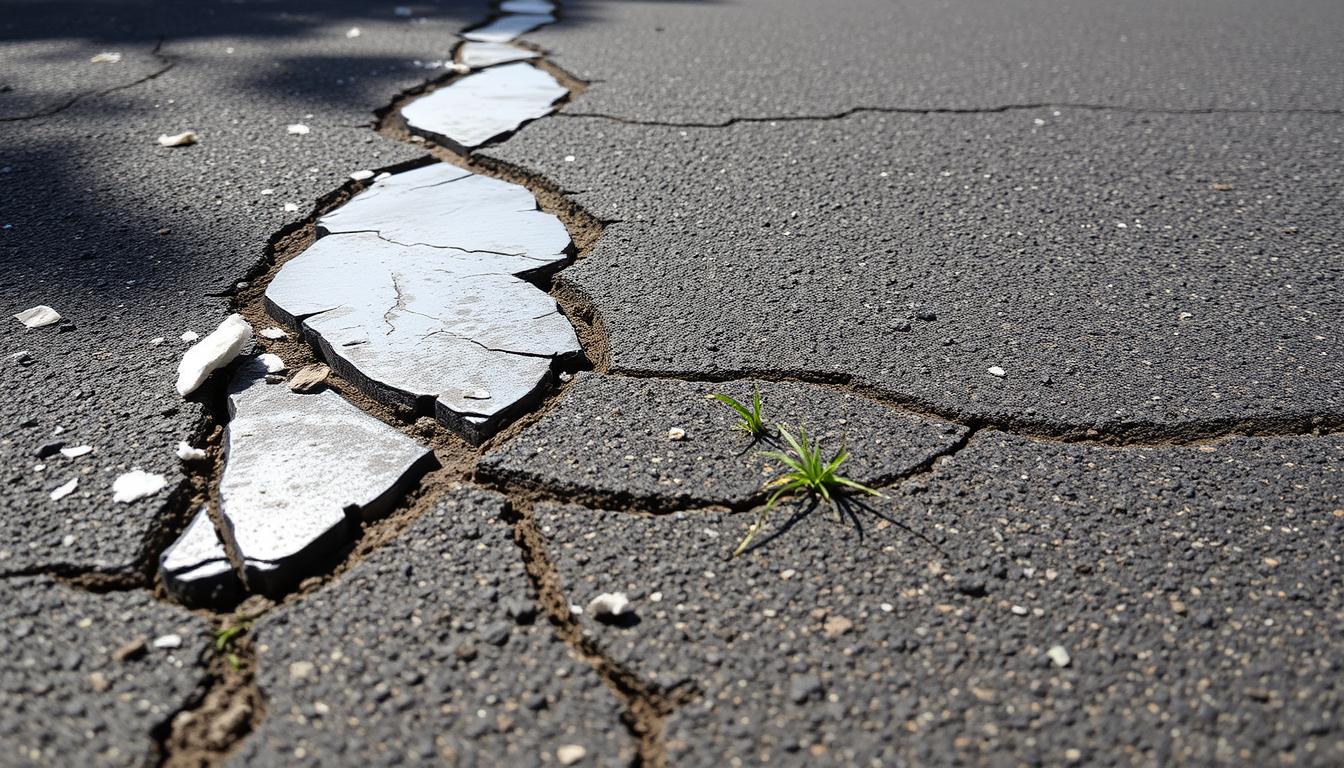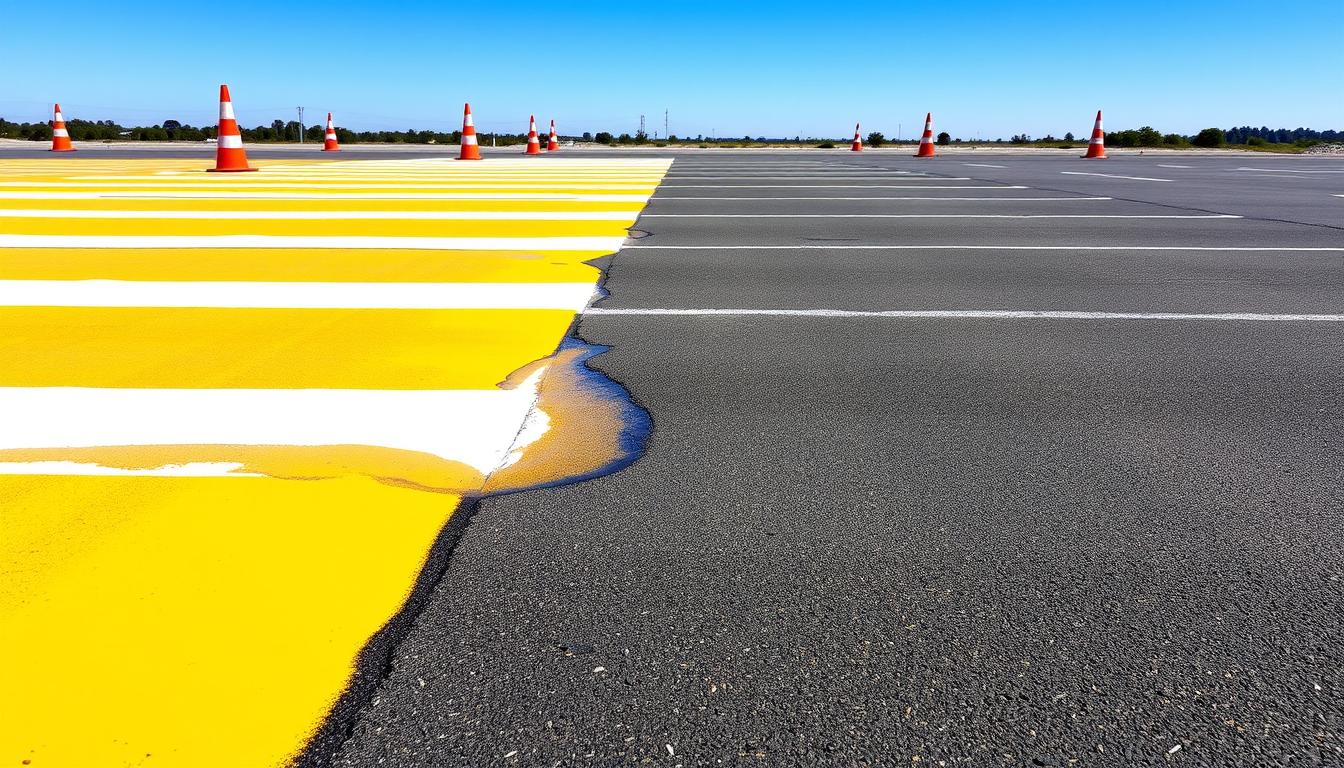Ever wondered Is it Better to Repair or Replace Damaged Concrete? Many homeowners face this dilemma. They’re unsure if they should repair or replace the damaged concrete.
Concrete is strong but can crack, chip, and settle. The choice between repair and replacement depends on the damage’s severity, cost, and impact on property value. Knowing about modern repair techniques can extend your concrete’s life and save you money.
Many types of damage can be fixed, helping you decide the best choice for your situation.
Key Takeaways
- Repairing concrete is often a cost-effective solution, typically 50-70% less than replacement.
- Modern methods can address around 60% of concrete damage, providing sustainable options.
- Replacement is necessary when damage compromises structural integrity or exceeds repair limits.
- The type of damage, such as cracks from freeze-thaw cycles, often dictates the best course of action.
- Quick turnaround times for repairs make them more appealing under tight schedules.
Understanding Concrete Damage
Concrete damage comes in many forms. Property owners need to spot the signs early. Knowing the types and causes helps fix problems before they get worse. This part looks at common damage and what causes it.
Common Types of Concrete Damage
There are several types of concrete damage. Cracks can happen due to shrinkage or weather. Fixing them often involves using epoxy or polymer fillers.
Spalling is caused by harsh weather or deicing chemicals. It needs damaged parts removed and a new concrete layer applied. Scaling, where thin layers peel off, can be fixed by removing loose concrete and applying a resurfacer. Pitting in older concrete can be patched with a compound.
Erosion from water can also damage surfaces. It’s important to divert water and patch up affected areas.
Causes of Concrete Damage
Understanding why concrete gets damaged is key to fixing it. Corrosion of reinforcement bars can cause big cracks. Fixing this involves removing rust and patching.
An alkali-aggregate reaction can also crack concrete. This needs affected areas removed and low-alkali cement used for repair. Settling can lead to uneven surfaces or cracks. Mudjacking or polyurethane foam injection can fix this.
Honeycombing, from incomplete mix filling, needs problem areas removed and replaced. Efflorescence, white deposits from water evaporation, must be managed by fixing water issues. Crazing, from bad curing, can be sealed or resurfaced.
Regular checks keep concrete in good shape. Fixing small problems early can prevent big repairs. Knowing about damage and causes helps owners keep their properties in top condition.
Assessing the Extent of Damage
It’s important to know how much damage a concrete surface has. This helps decide if you should fix it or replace it. Small cracks and chips are usually easy to fix. But big cracks that harm the concrete’s strength need more serious action.
Minor vs. Major Damage
Minor damage is just surface issues that can be fixed with simple steps. This includes small cracks or flaking. But major damage, like big cracks or sinking, might need a full replacement.
Knowing the difference helps you choose the right fix. This can save money. It’s smart to check damage early to avoid costly fixes later.
Signs It’s Time to Replace
Some signs mean you should replace the concrete, not just fix it. If repairs keep failing, it might be a sign of deeper problems. Also, look out for big cracks, large fissures, or sinking slabs.
Talking to experts can help you understand your concrete’s condition. They can guide you to make the best choice. Regular checks can also prevent more expensive repairs in the future.
If you’re unsure about your concrete, consider getting a professional opinion. They can give you advice that fits your concrete’s specific needs. This protects your investment.
Benefits of Concrete Repair
Choosing concrete repair has many advantages. It’s both cost-effective and quick. This means you can fix small problems before they get bigger and more expensive.
Cost-Effectiveness
Concrete repair is cheaper than replacing it. It can save you 30% to 70% of the cost. Quick fixes can solve small issues without a full replacement.
Fixing minor cracks or spalling early can save a lot of money. Plus, regular maintenance and repairs can add 10 to 20 years to your concrete’s life. This makes it a smart investment.
Quick Turnaround Time
Quick concrete repair solutions are great for any place. They can be done in hours or days, unlike replacements which take longer. This means you can use the area again fast.
Property owners love how fast repairs are done. It means less downtime and you can get back to normal quickly. This is super helpful for places that get a lot of use.
When to Consider Concrete Replacement
Concrete is key in many places, like driveways and patios. Wear and tear can make it necessary to replace it. Knowing when to replace it can save money in the long run. Even though it costs more upfront, the long-term benefits are worth it.
Long-Term Savings
Replacing concrete costs about 50% more than fixing it. But, it’s a better choice for saving money over time. For example, fixing big damage is only a temporary solution. Replacing the whole slab can last 25 to 50 years in busy areas.
Homeowners should think about when to replace concrete. They should look at the damage and how much they’ll use it.
Impact on Property Value
The impact on property value is key when thinking about replacing concrete. Bad concrete can make a property less appealing. This can lower its value when selling.
Fixing old or cracked concrete can improve a property’s look. It’s also a smart move if the concrete is in good shape for selling. A property with strong concrete is more attractive to buyers, which can boost its value.
The Repair Process Explained
Understanding how to fix concrete damage is essential for property owners. There are many ways to repair concrete, each for different problems. From simple fixes to more complex methods, these techniques help keep concrete strong.
Common Repair Techniques
Common repair techniques include patching for small issues. Resurfacing makes the surface look better and work better. Slabjacking fixes sinking slabs by adding material underneath.
Using these methods can make concrete last longer. Keeping it sealed every two to three years stops water damage.
Tools and Materials Needed
Fixing concrete needs the right tools for concrete repair. You’ll need trowels, repair compounds, and sealants. A concrete repair kit has everything for big cracks.
Getting ready before you start is important. This way, weather won’t ruin your repair. Having the right tools is key to a good fix.
The Replacement Process Explained
The concrete replacement process has key steps to fix damaged surfaces. Homeowners often choose between resurfacing or full replacement. Knowing the steps helps make this choice easier.
Key Steps in Concrete Replacement
The first step is removing the old concrete. This is vital if the concrete is badly damaged or doesn’t meet safety standards. After removing the old concrete, the ground needs thorough preparation.
This preparation is important for a strong base for the new concrete. Then, the new concrete is poured. It then needs time to cure, usually up to 28 days. Understanding these steps helps plan the project and reduce disruption.
Choosing the Right Concrete Mix
Choosing the right concrete mix is key for a successful project. Many factors affect this choice, like the climate, traffic, and the structure’s use. For example, some mixes are better for heavy traffic, while others are good for homes.
Homeowners should talk to experts to pick the right mix for their project. This ensures the mix meets their needs.
Factors Influencing the Decision
Choosing the right path for concrete projects requires careful thought. Homeowners and businesses must consider their budget and the time needed for the project. Knowing these factors can greatly impact the success of the repair or replacement.
Budget Considerations
Fixing concrete can be cheaper than starting over. It can save 50-70% of the cost, which is good for small problems like cracks. But, big damage might mean you need to replace it, like with many potholes or bad drainage.
Thinking about future costs is key. Fixing it right can save money in the long run.
Project Timeline
The time it takes is also important. Fixing concrete can be quick, with some repairs ready in 15 minutes. But, replacing it takes longer, often days, because new concrete needs time to cure.
Knowing these times helps you pick the best option for your schedule and needs.
HT Paving and Seal Coating Services Approach
HT Paving and Seal Coating Services has over 30 years of experience. We offer top-notch concrete repair services. Our team creates custom solutions for each client, tackling common issues like cracks and uneven surfaces.
The local weather in Napa, with its wet winters and dry summers, makes professional repairs essential. We aim to provide efficient and effective services that make our customers happy.
Our Repair Services
We use advanced techniques, including polyurea coatings, for durable protection. Our services cover a wide range, from foundation repairs to driveways. We use products like CR Mender and CR Patch & Coat for both big and small repairs.
Regular maintenance can save you money by avoiding expensive replacements. A well-kept concrete driveway can last 25-30 years with regular sealing every 2-3 years.
Our Replacement Services
If repairs aren’t enough, we offer reliable concrete replacement services. We focus on quality and durability, ensuring the new concrete meets high standards. Each installation takes 3-5 days, showing our commitment to quality and efficiency.
Properties with quality concrete work see big benefits. They get a boost in property value and curb appeal. We also offer flexible payment options to fit different budgets, making it easier to get the concrete solutions you need.
Safety Measures in Concrete Projects
Keeping concrete projects safe is key, as problems can cause big dangers and even collapse. It’s vital to have strong safety steps in place to protect workers and the public. Following safety rules for concrete projects helps avoid accidents and boosts project success.
Importance of Safety Protocols
Safety rules are essential in concrete work. They help prevent risks from issues like cracks and spalling, which can show deeper problems. This careful approach keeps accidents away, which is important in busy areas where bad surfaces can cause slips and falls. Companies that focus on safety show they are serious about quality and reliability.
Training and Certifications
Training and certifications are essential for concrete workers. They learn to do their jobs safely and effectively. This includes using methods like epoxy injection and resurfacing.
Having licensed and insured workers also reduces legal risks. It ensures they follow safety rules. Investing in training and certifications makes workers better and increases property value after repairs.
Conclusion: Making the Right Choice
Choosing between repair and replacement is critical in concrete projects. We’ve explored various types of concrete damage. Knowing the extent of the damage is essential before making a decision.
Small damage can often be fixed, which helps your concrete last longer and saves money. But, big problems or wide cracks might mean you need to replace it.
Summary of Repair vs. Replacement
Understanding the differences between repair and replacement is vital. For example, big problems like spalling or large cracks usually mean you need to replace it. But fixing small damage early can save you money later.
Repairing is usually cheaper and less messy, while replacing might save money in the long run, even if it costs more upfront. It’s all about what you need, how much you can spend, and what you want for your property.
HT Paving and Seal Coating Services is here to help you decide. They offer expert advice to make the right choice for your property. Call them at (415) 774-6424 for help with your concrete needs in the Bay Area, California.

